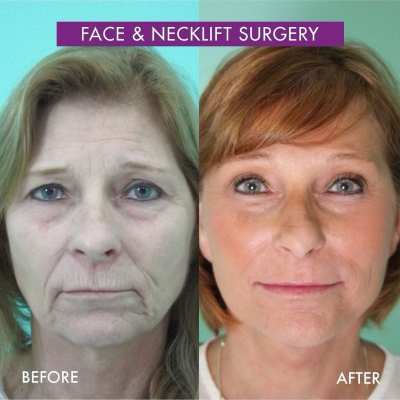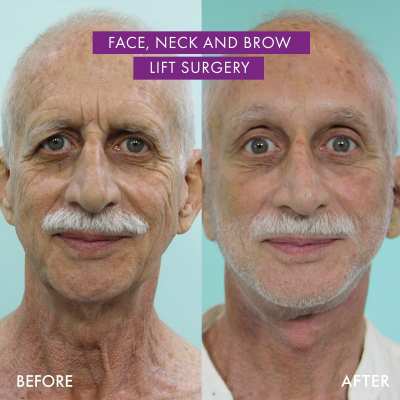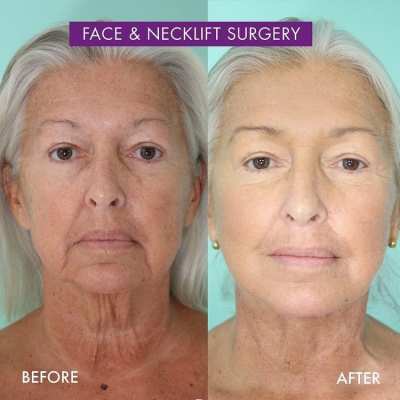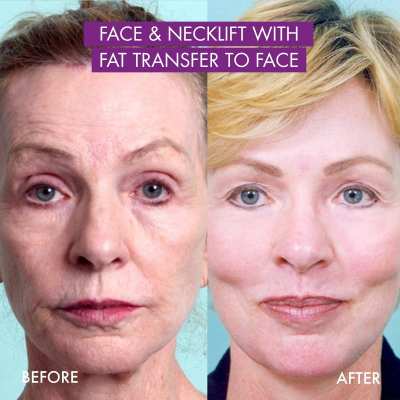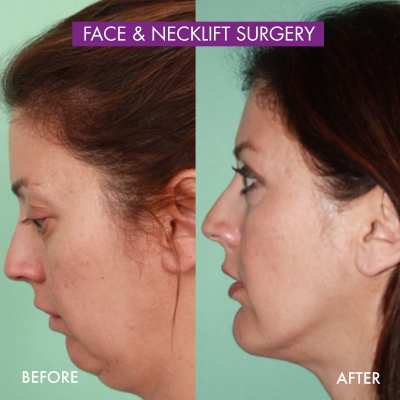Revolutionizing the Facelift
A true legend of cosmetic surgeries, facelifts are among our patients’ favorite procedures because of their unrivaled results. Patients come looking for a younger, fresher, and better-rested face. As the best plastic surgeons in Mexico, we are proud to offer different facelift surgery options to make our patients look young and rested, naturally.
When we opened our doors in Tijuana, a modern and safe clinic for cosmetic procedures decades ago, we decided to become experts in facial rejuvenation surgeries and turn something good – traditional facelifts- into something great – natural results guaranteed. At VIDA Wellness and Beauty, Dr. Alejandro Quiroz, one of the pioneers in facelift surgery in Mexico is a true believer that one size does not fit all and as such, has perfected different facelift techniques that can ensure every patient gets the results they are looking for.
You can get the best results possible from a facelift when your plastic surgeon is fully versed in the latest techniques that work in conjunction with your natural features, muscle tissue, and bone structure. Let’s go over the different types and techniques VIDA offers to facelift patients!


Dr. Quiroz | Facial Rejuvenation Specialist
The original: Traditional Facelift
Facelifts, also known as a Rhytidectomy, have gained a cult-like following because of their ability to turn back time. However, in plastic surgery procedures and techniques are constantly evolving to ensure that every patient that goes under the knife gets the best result possible. For some patients a traditional facelift could be a good option, however, the majority of patients will find that one of the more innovative techniques is better suited for the results they are looking for. Here is the thing: with a traditional facelift it is very hard to obtain natural results, particularly if the aging signs I want to be corrected are very severe.
Traditional facelifts have been around for decades, and during this procedure a plastic surgeon repositions the skin on the face and the neck, thus improving the overall appearance of the face. By doing this, the plastic surgeon can pull back the saggy and loose skin in this area which helps erase deep wrinkles, lines and better define some of the features like the jaw. One of the disadvantages of traditional facelifts is that if the patient needs to treat the entire face, the results might not look natural. Therefore, if you have ever seen a picture of a facelift patient that looks unnaturally tight or has a stretched appearance, this is probably the result of a traditional facelift, where the skin is lifted but the underlying tissue, including the supporting muscles, is not.
SMAS Facelift vs Platysmaplasty: key differences in facial rejuvenation results
The good news is that our very own Dr. Quiroz has mastered the newest facelift techniques, the ones that do consider underlying tissue, bone structure, and muscles in order to rejuvenate the face without getting that dreaded stretched look.
The Superficial MusculoAponeurotic System or SMAS facelift is the facelift technique that consistently delivers the best results with the least number of complications to patients. A tried and true revolutionary method, SMAS facelifts are preferred by many plastic surgeons because of the natural results that are also long-lasting. During a SMAS facelift, the surgeon makes small incisions that are usually concealed above the hairline or behind the ears. The name explains what is different between a SMAS and a traditional facelift: the superficial musculoaponeurotic system – SMAS- is a thin layer of tissue that covers the face and neck. During this procedure, the surgeon separates the skin from the SMAS and is able to trim and re-drape excess skin and lift facial muscles. By doing this the surgeon can achieve a very natural look, ensuring that when the patient makes a gesture, laughs, or smiles, everything looks completely as it should.
As great as a SMAS facelift can be, it is important to keep in mind that it only addresses the face. The results should not be confused with a platysmaplasty. Platysmaplasty gets its name from the platysma muscles, the muscles that can be found in the front of the neck. When doing a platysmaplasty, the plastic surgeon corrects and tightens the neck muscles in order to achieve a more defined neck and jawline.
For many patients, the best results are achieved by combining a SMAS facelift and a platysmaplasty.
Vive la Revolution: What is a Deep Plane Facelift?
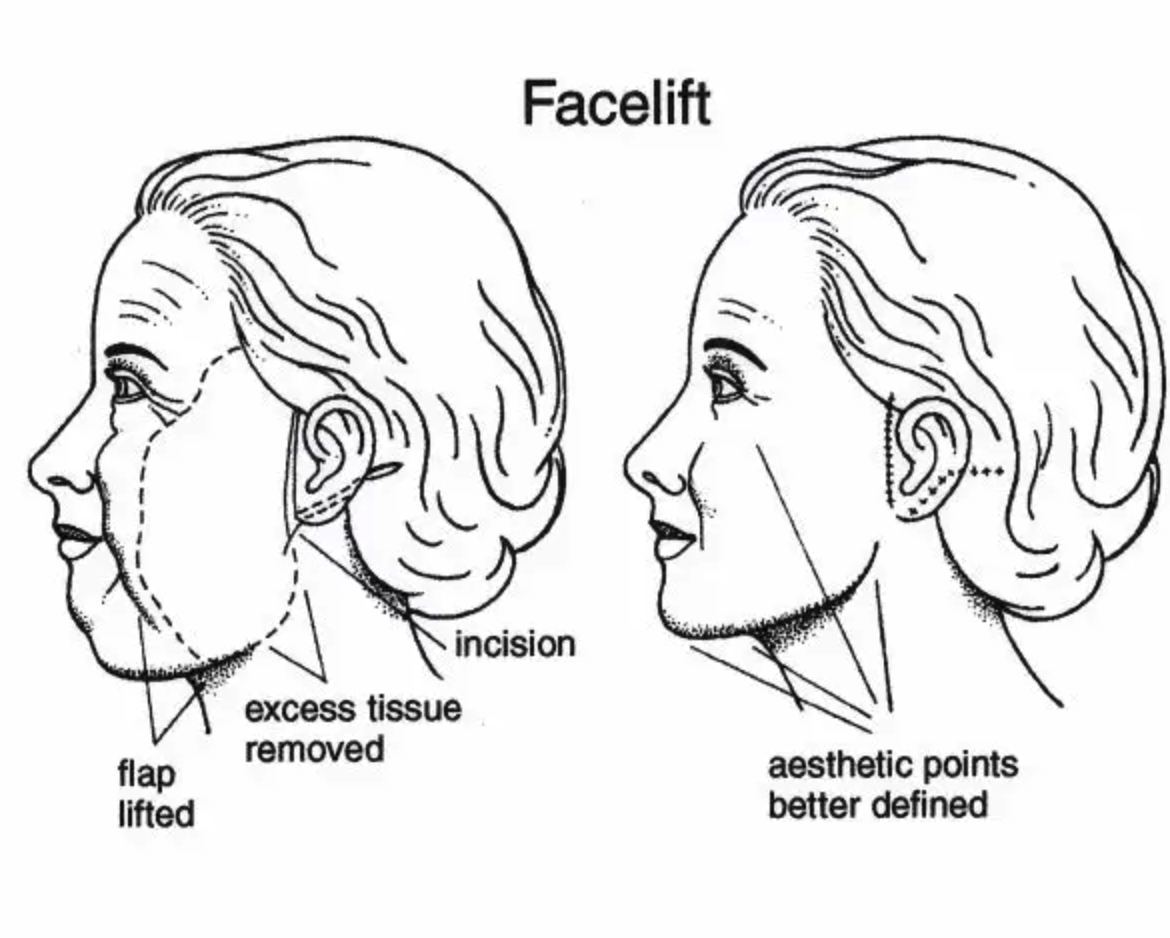

A deep plane facelift is one of the most advanced, yet invasive, facial rejuvenation techniques a surgeon can perform. When doing a deep plane facelift, the surgeon avoids the possibility of having an overstretched unnatural result. The Deep Plane Facelift is the king supreme of facelifts for those patients who have severe signs of aging.
What sets a deep plane facelift apart, is that the magic happens by carefully lifting underneath the muscle layer, the skin remains attached to the muscle tissue, and as such the results are anatomically natural.
A deep plane facelift is similar to a SMAS facelift, however during this procedure, the surgeon goes deeper into the face and underlying tissue. During a deep plane facelift procedure, your plastic surgeon will make a small incision, proceed by releasing different ligaments of the face and modify and correct the muscle tissue underneath. As opposed to a traditional facelift, where the wrinkles and excess skin are removed and rearranged with sutures (that look overstretched), this procedure also tightens and reshapes different underlying muscle structures.
Deep Plane Facelifts do offer many advantages, however, not all patients will be candidates or need a deep plane facelift. The best technique will be determined by your surgeon after you have a consultation and the state of your skin, wrinkles, and volume/elasticity are thoroughly evaluated. As we said at the beginning, one size NEVER fits all.
Dr. Quiroz Patients
A Facelift for Every Face: Vertical Lift, Pony Tail Lift, and Mini Lift
The goal of every facelift performed at VIDA is to deliver the best results to every patient, every single time. This means considering the individual features, aesthetic goals, and desires of every patient and using the technique that will work best.
In addition to the deep plane facelift and SMAS technique, there are different terms we think you should be familiar with when researching facelift procedures.
Vertical Lift.
A vertical facelift is a method used specifically to improve the look and reduce signs of aging in the lower third of the face such as the jawline and the chin. During a vertical facelift, the surgeon lifts your deep facial tissues in a vertical way and repositions them upwards, compensating for gravity, which is what ultimately pulls down skin that has lost volume and elasticity. An advantage of a vertical lift is that since the skin and muscle layers are lifted on a vertical vector, the look of stretched “wind-swept” skin can be avoided.
This option is not recommended to those patients who are looking to revitalize their entire face because it improves only the lower portion of the face.
Pony Tail Lift.
If the catchy name is not a good enough reason to pique your interest, some surgeons employ the term ponytail technique facelift when talking about a technique that is less invasive than that of a traditional facelift. Dr. Quiroz reminded us that “ponytail lift” is a marketing name and not a medically standardized term. In general terms, a ponytail lift is used to describe a less invasive endoscopic procedure better suited for younger patients. The advantage of an endoscopic, minimally invasive, or ponytail lift is that there are really small incisions and results are very natural. With that being said, an endoscopic facelift will not be the answer for patients who are getting surgery in order to address deep wrinkles and severe sagging of the skin that cannot be improved through non-surgical methods such as injectables, Botox, or radiofrequency treatments.
As Dr. Quiroz said, the moral of the story is that some surgeons charge more simply by using the term ponytail lift, when in reality the patients should go to a surgeon that personalizes every aspect and technique used during a facelift.
Mini Lift.
A mini facelift is another term that can confuse patients. A mini facelift is commonly used to describe a less invasive facial rejuvenation surgery. As the other facelift techniques or terms that we have talked about that refer to a less invasive procedure, mini facelifts are a good option for patients who don’t have severe signs of aging but would like to fix their jowls, looseness, or vertical bands in the neck or skin laxity.
Ready to revolutionize your look with a Facelift? Claim your free plastic surgery consultation right now!
Tijuana, Mexico is one of the world’s premier destinations for facelift surgery at an affordable price. VIDA Wellness and Beauty is the place for the most experienced board-certified surgeons to make sure that having a facelift is the best decision of
your life. Call +1(619) 738-2144 today to schedule a free private consultation with a plastic surgeon.
